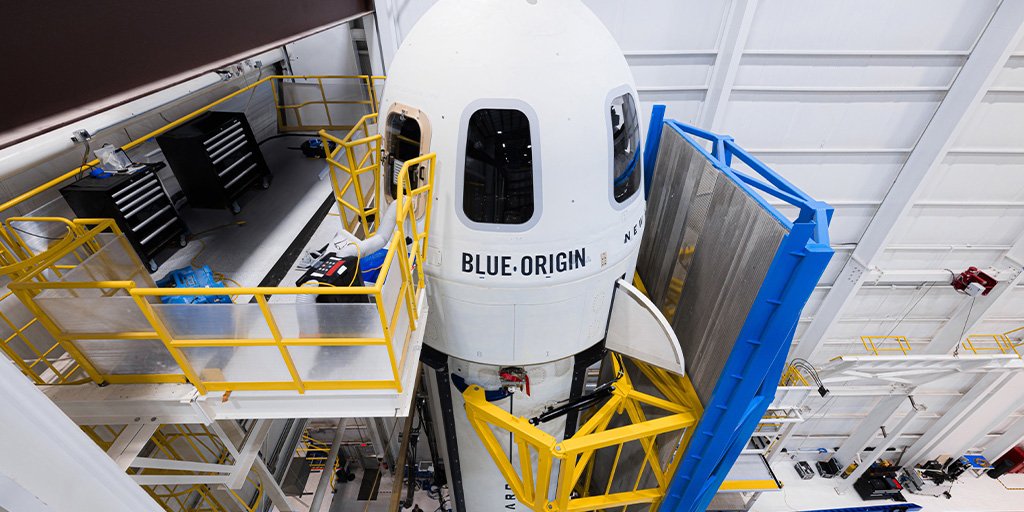Sunday might just be a great day for space exploration
Update: Europa Clipper has been pushed back to Monday at 16:06 UTC
This Sunday could be a great day for space enthusiasts, as NS-27, Starship Flight 5 and Europa Clipper are scheduled to launch while Crew-8 plans to return to Earth.
Crew-8 Return
(Image credit: NASA)
SpaceX and NASA are planning to bring back a crew of four from the International Space Station.
The mission, known as Crew-8, launched on March aboard a Falcon 9 rocket with:
Commander Matthew Dominick, NASA.
Pilot Michael Barratt, NASA.
Mission Specialist Jeanette Epps, NASA.
Mission Specialist Alexander Grebenkin, Roscosmos.
This was the first flight for Dominick, Epps and Grebenkin while it was Barratt’s third flight, having previously launched on Soyuz TMA-14 and STS-133.
Undocking from the station is expected at 07:05 UTC from the zenith port. This mission will also be the longest flight to date of Crew Dragon, having spent slightly more than 9 months docked with the orbiting laboratory.
At the time of writing, the splashdown time is yet to be announced, but it usually happens a few hours after undocking.
Starship Flight 5
(Image credit: SpaceX)
The IFT-5 stack, composed of Booster 12 and Ship 30, is scheduled to launch its long-awaited test flight at 12:00 UTC Sunday from SpaceX’s facilities in Boca Chica, Texas, pending regulatory approval.
This flight will be nothing short of spectacular, as we may get to see the first attempt on catching the Super Heavy booster with the chopsticks, a goal on which workers have been working for thousands of hours. This will be another fundamental step towards Musk’s goal of making a rapidly reusable launch system.
Ship 30 will then reach an *almost* orbit, where it is scheduled to reenter just an hour later. On Flight 4, Ship 29 attempted a similar maneuver but ultimately landed several kilometers off-target due to a burnt flap.
This test flight, according to SpaceX, has been ready to fly since early August, but has been “pending regulatory approval”. While the FAA told SpaceX the license was coming in late November, it could be approved before Sunday, according to sources, like Michael Sheetz or Eric Berger. (NOTE: As of the publishing of this article, SpaceX has just tweeted stating “We expect regulatory approval in time to fly on October 13”)
We will be able to see humanity take another step towards the stars.
For more details on Flight 5, read this article.
NS-27
(Image credit: Blue Origin)
Blue Origin wants to launch the NS-27 mission on the New Shepard rocket at 13:00 UTC Sunday, after a launch attempt was made the previous Monday, but after several holds, the call to abort the flight was made at T-1 minute due to a “vehicle issue that would’ve taken us beyond our launch window”, the company stated on a tweet.
This uncrewed launch will serve as a test for the new crew capsule, named “RSS Kármán Line”. Upgrades include:
An updated livery
Improved “performance and reusability”
Accommodations for payloads on the booster (first flight of Booster 5 in this case)
The launch vehicle will fly a total of 12 payloads, including five on the booster and seven inside RSS Kármán Line.
For more information about the NS-27 mission, click here.
Europa Clipper
(Image credit: NASA)
SpaceX is planning to launch their second rocket of the day at 16:12 UTC. But not just another ordinary Starlink, this will be a Falcon Heavy launch carrying the Europa Clipper mission.
Falcon Heavy will lift off from historic pad 39A, the one which took humans to our natural satellite back in the 60s, carrying one of NASA’s most important science missions of this decade.
The payload, Europa Clipper, will for the first time use science instruments to investigate Jupiter’s icy moon – and see if it could have conditions for life.
It will take photos of Europa, study its oceans and look for signs of geological activity.
SLS launch
Up until 2021, the plan was to launch Europa clipper onboard a SLS rocket.
The obvious advantage of ditching SLS was its price. Not just its launch price, but also the price for the Clipper. NASA determined that making Clipper fly on SLS would also add another billion dollars on redesign to survive its rocket's vibrations.
However, by choosing Musk’s company, the journey will take little less than 6 years to get to Jupiter, instead of the 3 years it would have taken with SLS.
If you want to learn more about the amazing science Europa Clipper will do, we encourage you to read this next.



